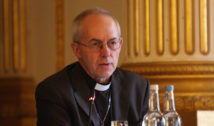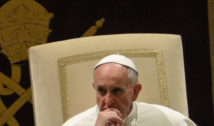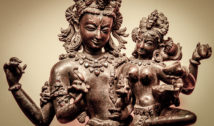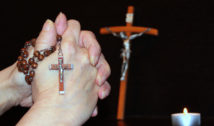
The Origins and Similarities of Halloween, All Saints’ Day, Samhain and Reformation Day
- By Kelly Frazier --
- 27 Oct 2016 --
![By Silar (Own work) [CC BY-SA 3.0], via Wikimedia Commons](http://www.worldreligionnews.com/wp-content/uploads/2016/10/AllSaintsHalloweenReformationSamhain.jpg)
The relationship between Halloween, Samhain, Reformation Day and All Saints’ Day
Despite being commemorated around the same period of the year by different groups across the world, Halloween, Samhain, Reformation Day and All Saints’ Day all have different origins, meanings and rituals. However, they do tend to have a number of similarities.
The Origins and Similarities of Halloween, All Saints’ Day, Samhain and Reformation Day[/tweetthis]
The Witches are definitely IN! Officially gearing up for Halloween, All Hallows Eve, Samhain, Día de Muertos. ~C
— Catherine Novak (@BeadsNBotanical) October 8, 2016
Origins of The Holidays
Samhain
From sundown on October 31 through November 1, thousands of Wiccans, witches, Druids, and other pagans across the world observe Samhain. Samhain means “summer’s end” and it is a festival of the dead. This celebration marks the end of harvest and beginning of the coldest period of the year. For others, it also marks the start of the spiritual new year.
Halloween
The origin of Halloween has pagan roots and is Celtic. It mainly began as a summer sacrifice to appease the lord of evil spirits and the dead, Samhain. It was believed that humans could avoid attacks from evil spirits by wearing disguises to look like the spirits. All Hallow’s Day was a Christian alternative of this, originating in medieval England, and celebrating the lives of faithful Christian saints.
Reformation Day
Held on October 31, this celebration commemorates the posting of Martin Luther’s 95 Theses on the door of the Castle Church in Wittenberg, Germany back in October 31, 1517. These were translated and shared all over Germany resulting in the Protestant reformation. This involved a protest against the evils in the Roman Catholic Church at the time and also the rediscovery of the doctrine of justification which assured salvation by Grace and faith in Christ alone.
All Saints’ Day
This was first celebrated when Pope Boniface IV dedicated the Pantheon in Rome to the Virgin Mary on May 13, 609. This date was changed to November 1, by Pope Gregory III when he dedicated a chapel in the Vatican Basilica in honor of all saints. He then went on to order for its church-wide observance.
During the reformation, Protestants understood saints to mean all believers and thus All Saints became a celebration of the unity of the entire Church.
How Are They Similar?
Some people believe that as Christianity spread out rapidly across Europe becoming the dominant religion, the Samhain Celebration took on Christian names and guises. Samhain originated in ancient Europe as a Celtic Fire festival and over time went on to be celebrated worldwide. Samhain involves an ancient spiritual practice that entails remembering and paying respects to the dead. This is therefore one of the major similarities between these holidays.
- All Saints’ Day or All Hallows is held on November 1. This holiday involves commemoration of Christian saints and martyrs.
- All Souls’ Day held on November 2 acts as a remembrance for all souls of the dead.
- Halloween or All Hallow’s Eve, is celebrated on and around October 31. Halloween and Samhain both have roots in end-of-harvest celebrations of the ancient past. However, despite the similarities, Halloween is more of a secular holiday. Therefore, there is a major difference when it comes to practice and focus of the holidays. Halloween has over time evolved to become a holiday for all age groups and involves traditions such as pranks, storytelling, trick-or-treating, costumes and multiple cathartic scary place visits and parties.


















